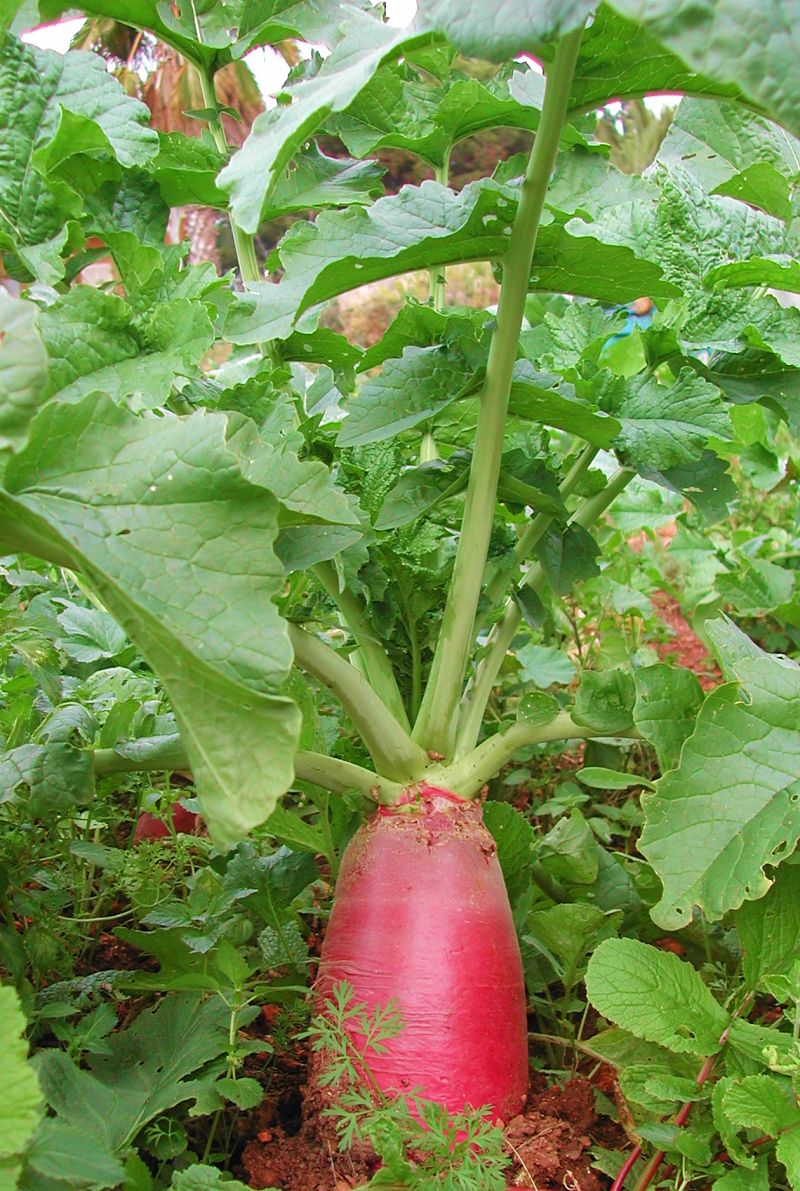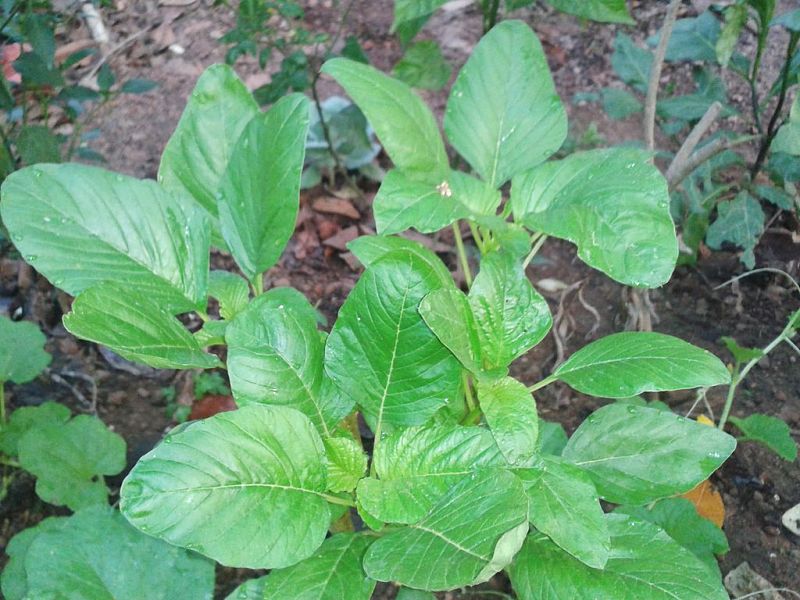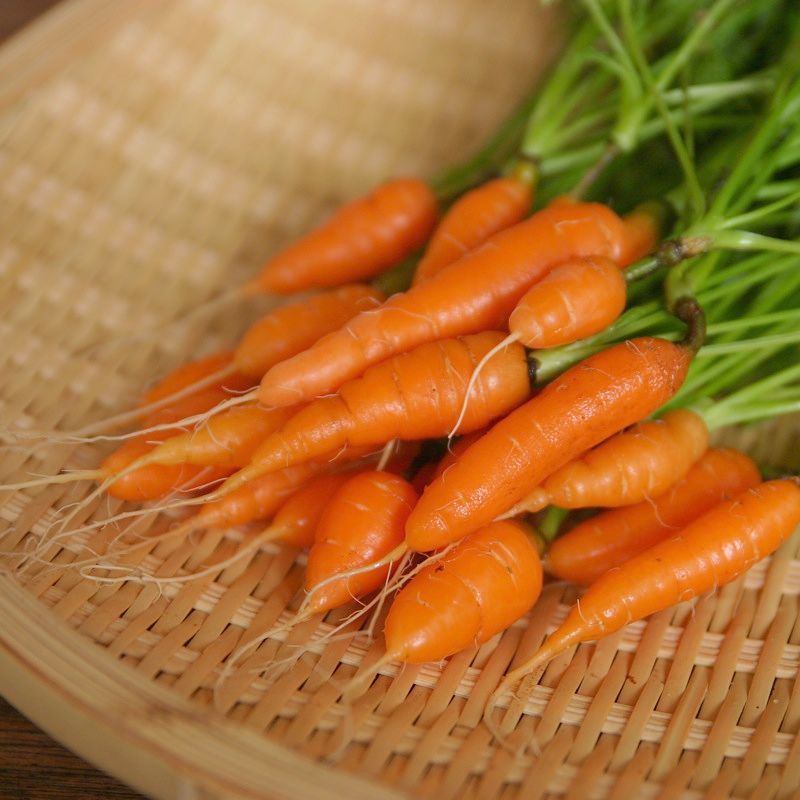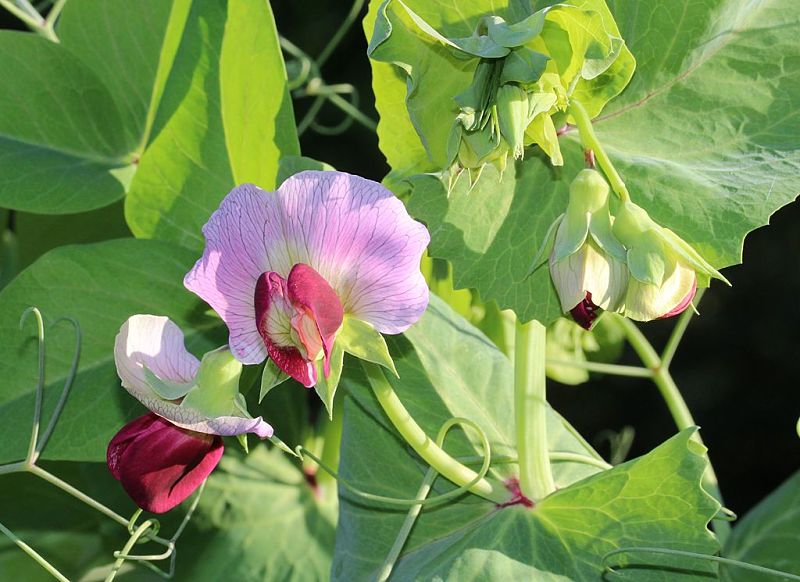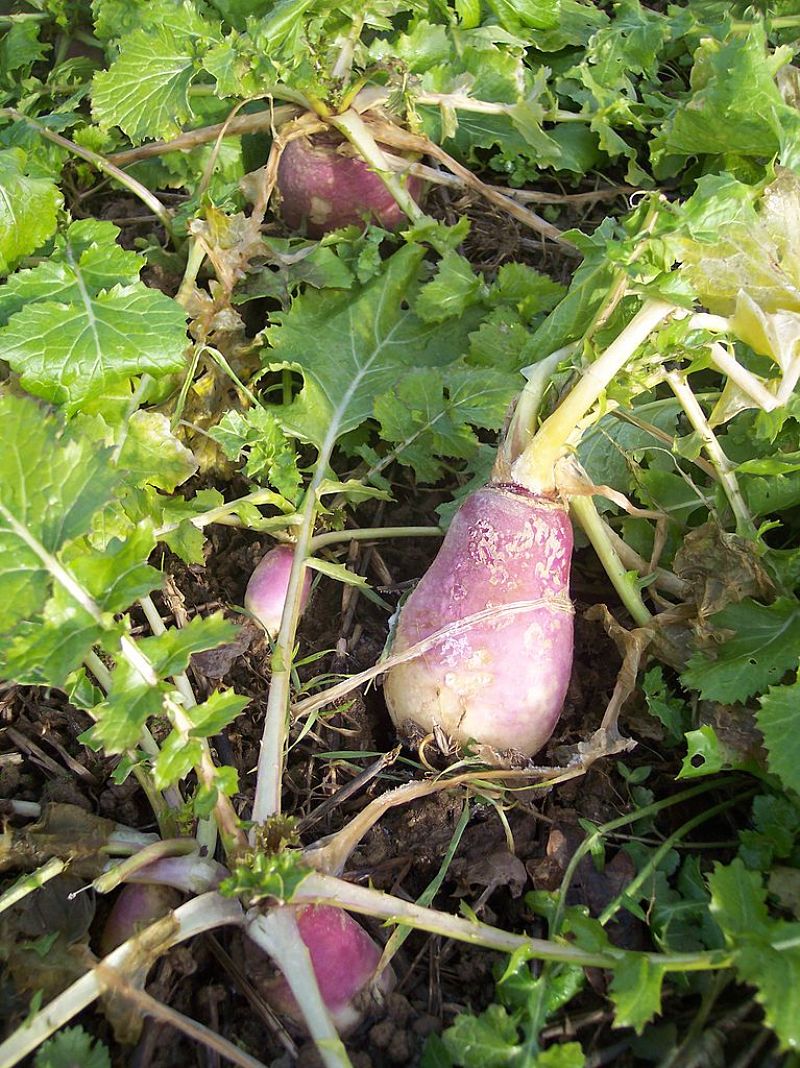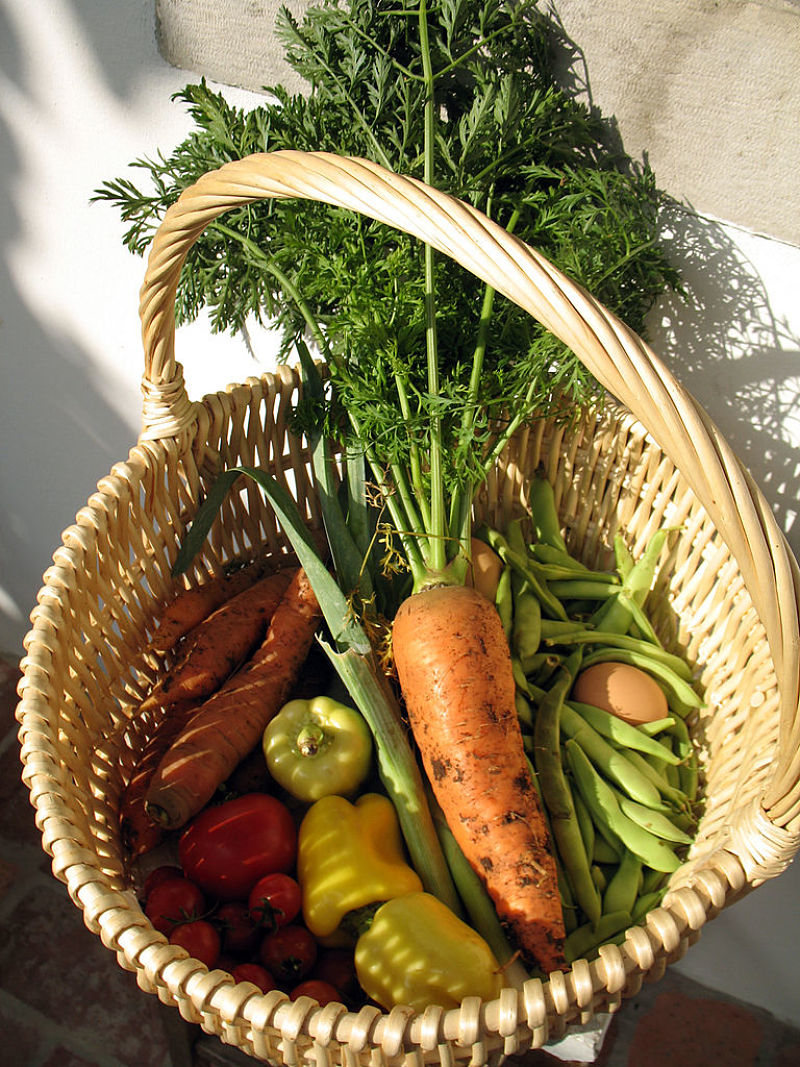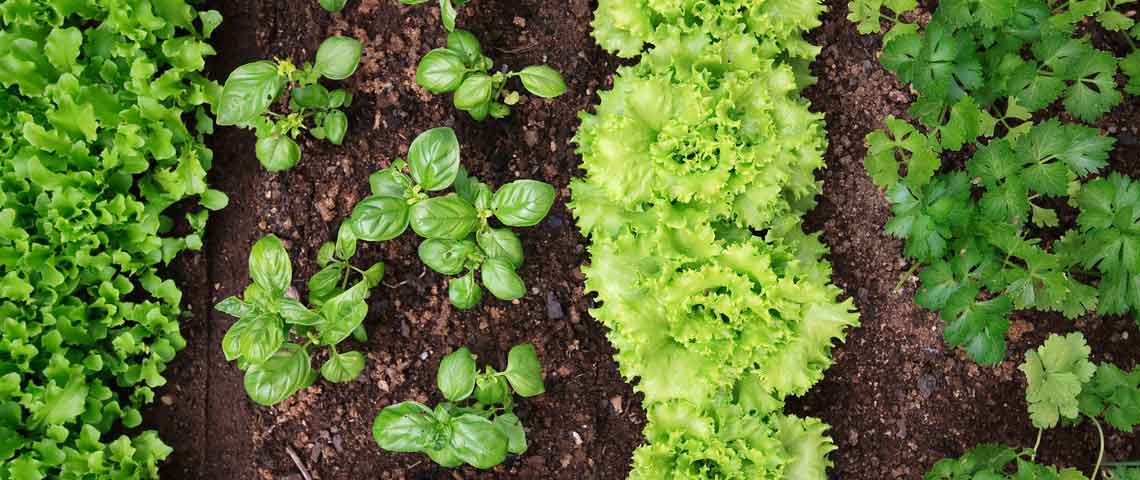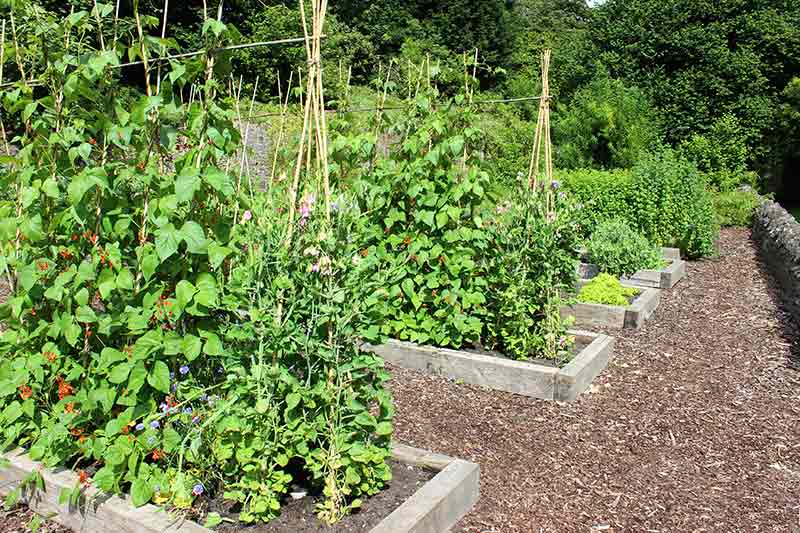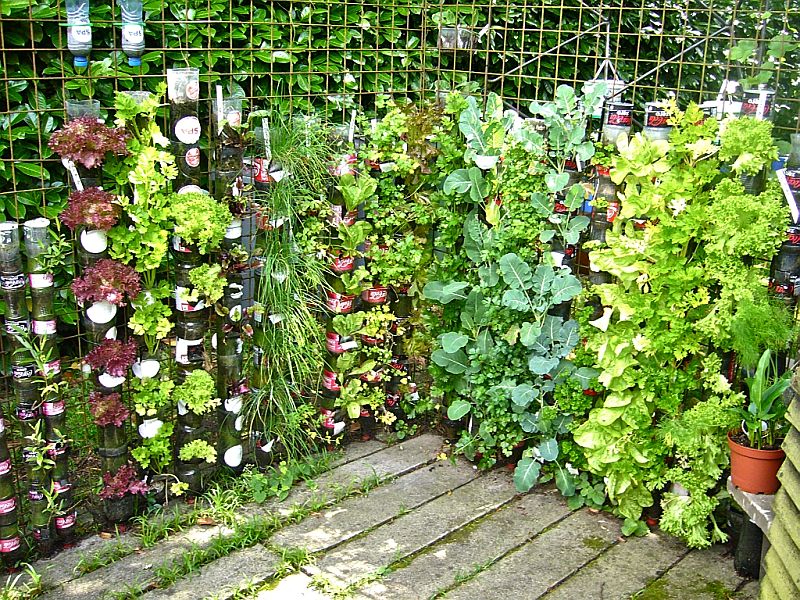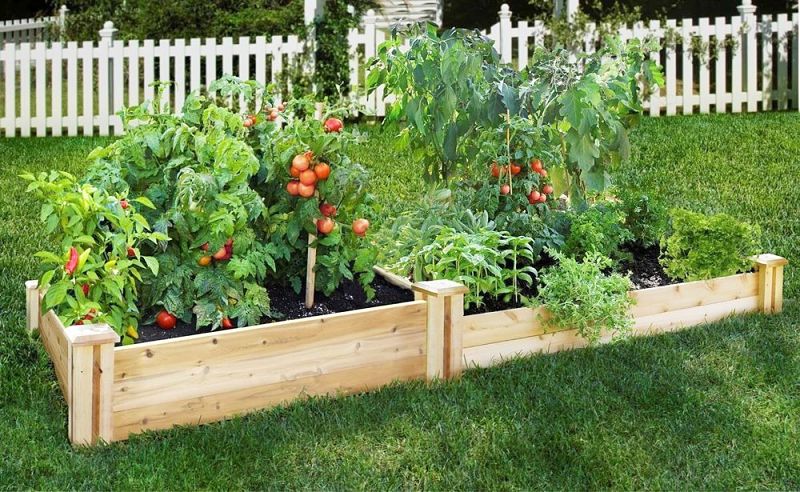Fastest Growing Vegetables Guide - Growth Rate Charts, Early Yield Tips
If you are starting a new vegetable garden or replanting one after the end of Winter it is useful to know which vegetables will provide quick yields. Some plants such as radishes reach maturity within 20-30 days and can be fully harvested after this period. Other plants be trimmed to provide leaves and shoots on the way to the plant reaching maturity.
Turnips are a good example of this. Leaves can be harvested from the tops after about 25 days which the turnip roots or tubers are still growing. Of course, you need to take care not to take too many leaves as this may affect the growth rate of the tubers.
The same applies for bulb onions which may take months to fully mature. But you can start harvesting the greens within 25-30 days and the plants will continue to develop the bulb and to and produce more more shoots.
Or you may want top grow scallions and harvest the entire plants which mature within 20-30 days.
This article includes a chart of the days to maturity of common vegetables, lists vegetable that can be harvested early for leaves and shoots and provides tips and guides for getting early yields from vegetables.
Discover the best time to grow vegetables in your growing zone.
Vegetable Growing in Space
NASA is testing a small portable greenhouse ('pillow') to grow fast growing lettuces at the International Space Station (ISS). This is a first and the leaves grown will not be eaten, but will be transported back to earth for testing. It is expected that plants will grow well in space once the problems of water-logging are addressed.
The absence of gravity, means that soil in a pot would float away. So soil is packed in a mesh bag to keep it together. NASA calls these bags "plant pillows". The other problem is watering the plants as the lack of gravity means that water pools around the roots and cannot drain away. Various pumps and other devices have been developed. Wicks in the 'pillows' deliver water to the plants and stop it pooling.
It is expected that the lack of gravity will not be a problem and that once the seeds germinate, the shoots are expected to grow towards the light. Growing food and crops will be an essential requirement on long manned trips to Mars.
Fastest Growing Vegetables - Harvesting Shoots and Leaves
The table below lists the time for maturity of common vegetables with the quickest shown first.
Plants from which leaves and shoots can be picked while the main product is still maturing have been labeled.
Brief notes about over-wintering and ways to speed up the initial yield have been provided.
There are broadly three groups of vegetables:
Fast Growing Vegetables - Plants that yield Leaves and shoots or a fully mature within 25 days.
- Spring Onion
- Arugula and other Salad Greens
- Green Onion – Scallions
- Radish - Spring
- Spinach
- Mustard greens
- Water cress
Moderately Fast Growing Vegetables - Plants that yield leaves and shoots or a fully mature within 26-45 days.
- Romaine Lettuce
- Baby Carrots
- Parsnip
- Lettuce (leaf)
- Radish – Winter
- Turnip
Reasonably Fast Growing Vegetables - Plants that yield leaves and shoots or a fully mature within 46-50 days.
- Beet
- Broccoli
- Okra
- Snap Bean (Green Bean)
- Summer squash – Scallop
- Summer squash – Zucchini
- Cauliflower
- Cucumber Slicing
- Kohlrabi
- Peas - Snow (Sugar)
- Peas – Snap
- Peas – Garden (Shell)
Fastest Growing Vegetables
► Green Onions
Green onions of various types produce tops very quickly which can be harvested develop well before the bulb is mature. The types available are:
- Green Onions - regular onions, for which the tops can be partially harvested before they form a bulb
- Spring Onions - these have small bulbs that mature quickly
- Scallions - these varieties never form a bulb
You can sow seeds indoors 5 -6 weeks before the last frost in your area and wait a couple of weeks direct sow in the garden after the last frost.
► Radishes - Fast and Easy to Grow
Radishes should be grown as quickly as possible and eaten early as they can become hard or pithy when older. With proper care radishes can be harvested within 20-30 days. Some varieties grow faster than others.
► Salad Greens - Rapid Harvest
Various lettuce types can be harvested quickly by picking some of the leaves. Super quick maturing types such as arugula can be harvested as baby greens within 3 weeks. Most salad greens can be harvested within 21-55 days. Rocket and spinach also grow quickly when harvested as 'baby' types.
► Turnips and Beets - Two Crops in One
For these plants the tops can be trimmed as the plants grow well before the bulbs are mature. If the plants are kept growing quickly, trimming some of the leaves will not affect the development of the bulbs. Time to the first harvest of the tops is 30 – 60 days.
► Leaf Lettuce
Varieties such as Romaine can be first harvested about 30 days after planting. Start to remove small leaves once they reach 3 inches in size (7 cm)
► Baby Carrots
Baby carrots can be harvested after about 30 days. Choose faster growing varieties and sow in bulk expecting to harvest them before they are fully mature. Standard carrot varieties take 50 - 80 days to mature.
► Spinach
Spinach matures after 4-6 weeks, but can be harvested as 'baby' leaves
► Kale, Mustard Greens and Watercress
Many varieties can be harvested early and many are fast growers. Baby leaves can be picked starting from about 25 days. Most take about 50 to 65 days to mature, but can be continually harvested in the mean time.
► Green Peas
The various varieties yield pods that can be harvested as the plant grows. Snow and Sugar peas and other types are intended to be eaten before the peas develop in the pods. These develop sooner that the traditional varieties. Peas can be tall, semi-dwarf and dwarf varieties. Snow peas take only about 10 days to germinate and are ready for harvest in about 45-60 days.
► Bush Beans
Most varieties of bush beans can be harvested within 40-65 days from planting, but can be picked as 'baby beans'.
► Cucumbers
Most varieties can be harvested after 50-70, but some of them can be picked when small.
► Squash
Many varieties of squash, including zucchini, can be harvested after about 50-70 days. Small squash have a sweet taste and have very versatile uses.
Growth Rates of Common Vegetables with Fastest Listed First
|
Vegetable
|
Early Picking
|
Days to First harvest
|
Days to Maturity
|
Comment
|
|---|---|---|---|---|
|
Spring Onion
|
early, leaves
|
21
|
21-30
|
|
|
Arugula and other Salad Greens
|
early, leaves
|
23
|
23-55
|
|
|
Green Onion – Scallions
|
early, tops
|
24
|
24-140
|
|
|
Radish - Spring
|
|
25
|
25-40
|
Radishes larger than 2 in diameter are often pithy and unusable.
|
|
Spinach
|
early, leaves
|
25
|
45-60
|
Harvest the entire crop when plants begin to show signs of bolting.
|
|
Mustard Greens
|
early, leaves
|
25
|
50-65
|
|
|
Water Cress
|
early, leaves
|
25
|
50-65
|
|
|
Romaine Lettuce
|
early, leaves
|
30
|
30-90
|
|
|
Baby Carrots
|
early
|
30
|
30-60
|
|
|
Parsnip
|
early, tops
|
40
|
110-130
|
Can be overwintered in the ground, mulch and dig before new growth starts in spring.
|
|
Lettuce (leaf)
|
early, leaves
|
45
|
45-60
|
Harvest outer leaves, hot weather causes bitterness.
|
|
Radish – Winter
|
|
45
|
45-70
|
Can be left in the ground until frost.
|
|
Turnip
|
early, tops
|
45
|
45-70
|
Foliage can be harvested for greens.
|
|
Beet
|
early, tops
|
50
|
50-70
|
Up to 1/3 of the beet foliage can be harvested for greens without harming the root.
|
|
Broccoli
|
|
50
|
50-65
|
Harvest before yellow flower buds start to open, side shoots can be harvested after main head is removed.
|
|
Okra
|
early, leaves
|
50
|
50-65
|
Harvest frequently to maintain productivity.
|
|
Snap Bean (Green Bean)
|
|
50
|
50-70
|
Harvest when pods are pencil size in thickness.
|
|
Summer squash – Scallop
|
|
50
|
50-60
|
Harvest when skin is soft.
|
|
Summer squash – Zucchini
|
|
50
|
50-60
|
Harvest every 2 to 3 days when fruit are 2 in diameter.
|
|
Cauliflower
|
|
55
|
55-80
|
Blanch heads when 2-3 across by carefully tying leaves over heads.
|
|
Cucumber Slicing
|
|
55
|
55-65
|
1 to 2 diameter, harvest plants every 2 to 3 days.
|
|
Kohlrabi
|
early, tops
|
55
|
55-70
|
Store with leaves and roots removed.
|
|
Peas - Snow (Sugar)
|
|
55
|
55-85
|
Harvest when pods are long and thin, just as the seeds begin to develop.
|
|
Peas – Snap
|
|
55
|
55-85
|
Pick when seeds are nearly full size.
|
|
Peas – Garden (Shell)
|
|
55
|
55-85
|
Harvest when peas are full size.
|
|
Cabbage
|
|
60
|
60-90
|
Harvest when heads are large and solid.
|
|
Carrot
|
|
60
|
60-80
|
Harvest when orange shoulder pushes through the soil.
|
|
Pepper - Hot
|
|
60
|
60-90
|
Use gloves when harvesting.
|
|
Pepper – Sweet
|
|
70
|
70-90
|
Usually harvested when green, but can be left on plant until red, orange, yellow or purple.
|
|
Sweet Corn
|
|
70
|
70-105
|
Mature kernels exude milky sap when punctured.
|
|
Tomato
|
|
70
|
70-90
|
Harvest fully ripe for best flavor.
|
|
Eggplant
|
|
75
|
75-90
|
Fruit should have shiny finish.
|
|
Muskmelon Cantaloupe
|
|
75
|
75-100
|
When mature, stem separates easily from melon.
|
|
Watermelon
|
|
80
|
80-100
|
Harvest when 'belly' turns from white to creamy yellow.
|
|
Pumpkin
|
|
85
|
85-120
|
Harvest when uniformly orange, leave 3-4 of stem.
|
|
Winter Squash
|
|
85
|
85-120
|
Rind should be hard and difficult to puncture with fingernail.
|
|
Garlic
|
|
90
|
90
|
Harvest when foliage topples over and dries or just before first frost.
|
|
Onion
|
|
90
|
90-120
|
Harvest when tops fall over and begin to dry.
|
|
Potato
|
|
90
|
90-120
|
Dig when tops turn brown and die.
|
|
Sweet Potato
|
|
100
|
100-125
|
Harvest just before or after a vine killing frost.
|
